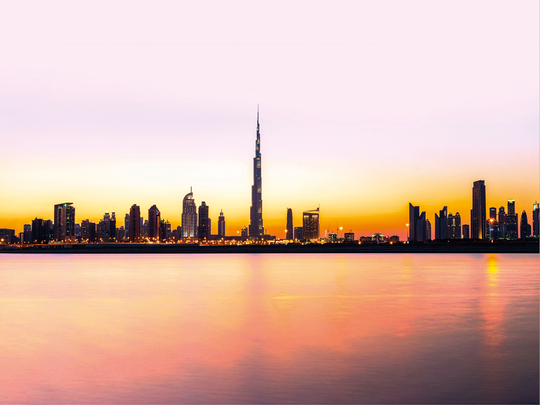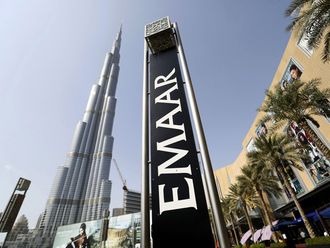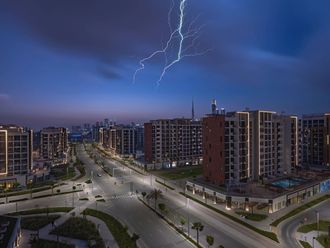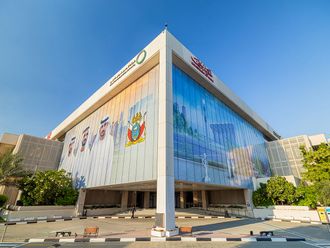
The growth in real estate development over the last 10 years has resulted in an upsurge in the number of ageing properties in Dubai that are now in need of fundamental repairs. With the value of such assets fast depreciating, the property owners need to find ways to extend the economic life of their buildings to enhance return on investment (ROI). Many are turning to the revitalisation route.
Revitalisation in itself is a capital expense (capex), but if implemented under consideration of life-cycle cost, it can extend typical building life cycles of 10-15 years to 30-50 years.
“Revitalisation should usually improve the ROI by 20-30 per cent, but could go even higher if a thorough planning or change of business model is the end result,” says Stephan Degenhart, managing director of Drees & Sommer ME.
Stephan Degenhart
Dubai, according to some estimate, has seen a 74 per cent increase in commercial and residential buildings and 38 per cent increase in hotel and hotel apartment buildings over the last 10 years. Consequently, more than 500 hotels are over a decade old. Such properties also face strong competition from an increasing number of modern buildings across the hospitality and residential segments.
“A continuous rise in building standards has also made it more difficult for older properties to remain attractive, further accelerating depreciation,” says Degenhart.
Hence, the owners of ageing properties are having no option but to constantly innovate or revitalise their properties to remain attractive. “To compete with new buildings being delivered to the market, it is important to constantly upgrade existing buildings to attract tenants willing to pay comparable rents,” says Anthony Taylor, head of real estate at Emirates NBD Asset Management, which has around $4.8 billion (Dh17.62 billion) worth of assets under its management. “Revitalised buildings also increase the likelihood of existing tenants renewing at lease expiry.”
What is revitalisation?
Revitalisation literally means giving new life to a building. This, Degenhart says, should happen when either the technical life of a building is ending, or more likely when the required user experience is not being met.
“Revitalisation differs from a facelift or renovation in terms of required specialist inputs, authority approvals and usually budget and time requirements, but also in the final product and, therefore, the potential ROI,” Degenhart explains.
Revitalisation can take place for a number of reasons, says Taylor, including improving building aesthetics, implementing new energy-saving technology and meeting new tenant requirements, such as IT/tech companies that require improved IT infrastructure.
Who’s revitalising?
Drees & Sommer, which has hotels in Dubai that are undergoing soft revitalisation driven by the owner and operator, says it’s an exciting time as many local clients are now reviewing their real estate assets as they understand the effect of revitalisation.
“We see the current demand for revitalisation in Dubai coming increasingly from hotels and shopping complexes, it will continue for commercial real estate and in the future for residential buildings,” says Degenhart.
However, he acknowledges that awareness in the wider market is “still limited” as local markets still profit from higher yields compared with Europe or the US, but “this will change as soon as ROIs stop meeting expectations”.
Disruption in operation is another concerning element for many owners going for revitalisation, but Degenhart says their teams consider different execution concepts (whether execution is possible while maintaining full operation), investment costs, operating costs, logistics and schedule implementation. “The scenarios are incorporated into economic feasibility studies, which also examine market value considerations and various financing options,” he adds.
Downturn impacts
Experts blame the deteriorating economic life of buildings to the downturn years when cutting cost was a must for many developers. “Buy-to-sell properties, especially off-plan properties, have undergone what is termed value engineering and results in cost reduction at build, but a shorter life span of the building, especially when it comes to MEP services,” says Alex Craine, executive director of real estate operations at Dubai Properties Asset Management, during a recent event on revitalisation.
Degenhart agrees that the biggest concern for buy-to-sell properties is that the developer is exclusively benefiting by reducing construction costs through lowering specifications or accepting cheaper alternatives.
“There is no consideration of the total life-cycle cost, which would result in slightly higher capex, but much lower opex throughout the life cycle of a building,” says Degenhart. “Even if ROI could be achieved within two to three years, there is no ‘incentive’ for the developers to invest in better quality and higher specifications, as their profit ends with the sale.”
Anthony Taylor
Apart from buy-to-sale properties, revitalisation could also be beneficial for property owners like Dubai Properties Asset Management, which has a buy-to-lease business model. “Revitalisation is even more important in the buy-to-let space because responsibility remains with us and ROI is much longer-term than off-plan and other properties for sale, so on average we carry out a revitalisation project every seven years,” says Craine, adding that the long-term return has enabled the company to make use of its developments for far longer than most of its competitors.
Sharing the procedure followed by ENBD REIT prior to any capital expenditure (money spent on revitalisation) on buildings, Taylor says the company does an analysis to weigh up the benefit of revitalisation versus the cost incurred. “Generally, we find the economic benefits such as increase in rental income and property value outweigh the cost of the project, and the revitalisation or upgrade takes place,” he says.
Although the time taken to recover the cost outlay through rental income does vary from project to project, Taylor reveals that it typically ranges between three and five years.












